Best Bazaars in Turkey: What to Buy and Where
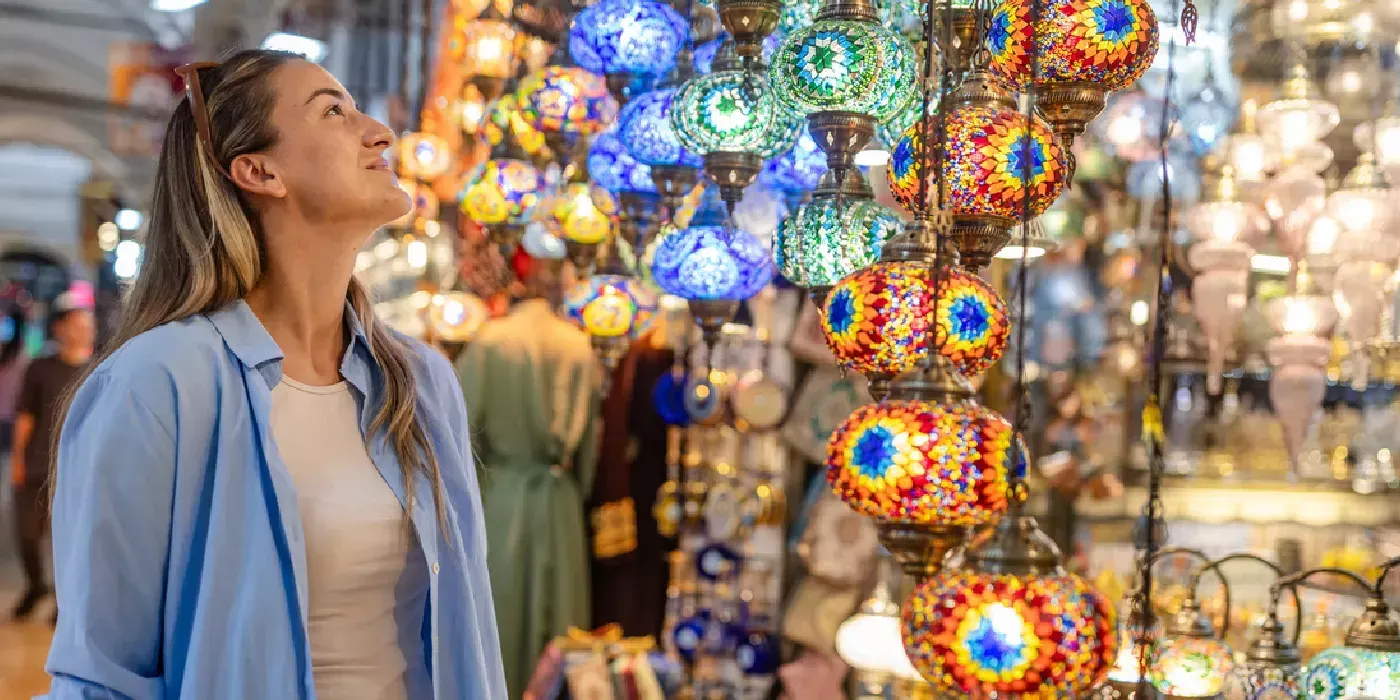
Turkish bazaars are vibrant mazes of commerce. The Grand Bazaar houses more than 4,000 stores behind its old walls. The bazaars have existed for centuries and are among the world's oldest and largest indoor shopping districts. The Grand Bazaar and Spice Bazaar (Egyptian Bazaar) have served as the life-blood of commerce since the 15th and 17th centuries respectively.
These markets do more than just sell goods- they create immersive cultural experiences where innovation and tradition converge. Tourists can discover specialized areas for gold, carpets, leather, ceramics, and spices in environments that range from ancient roofed bazaars to modern shopping streets. Shopping becomes a sensory adventure in Turkey as simple transactions turn into meaningful cultural exchanges. This article finds the country's best bazaars and what to buy from these handicraft, edible, and specialty souvenir treasure troves, making your Turkey tour truly unforgettable.
What to Buy from Turkey
Turkish bazaars hold a wealth of unique handcrafted goods. These eight authentic Turkish souvenirs deserve space in your bag, from ancient artisanal tradition to modern interpretations.
1. Turkish carpets and kilims
Turkish carpets represent a culmination of ages of weaving expertise. Authentic carpets use the double-knot technique, therefore more durable than one-knotted carpets. Tribal designs passed down generations create intricate patterns. Quality carpets contain exposed knots with slight variations that signify handwork originality. Hereke silk carpets that originally adorned the Ottoman Dolmabahce Palace are the most expensive carpet varieties in Turkey.
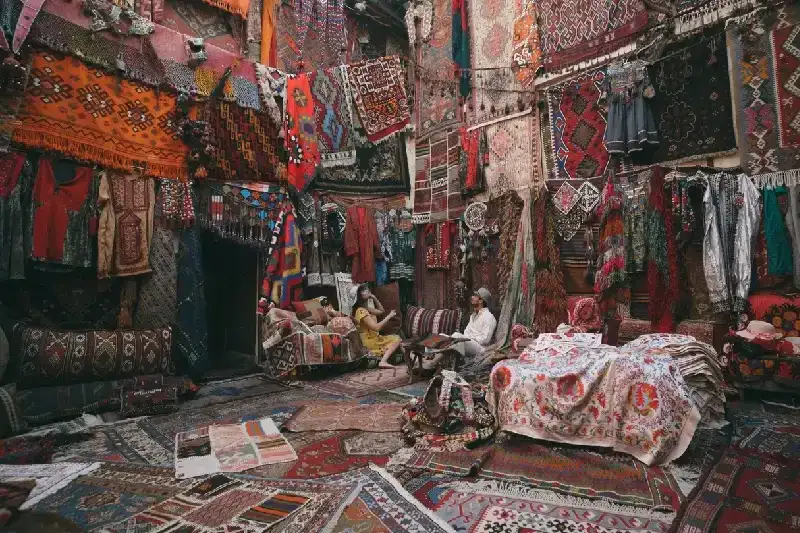
Customize Your Dream Vacation!
Get in touch with our local experts for an unforgettable journey.
Plan Your Trip
2. Spices and herbal teas
Rainbows of saffron, sumac, cumin, and paprika spill over the bright stalls in Turkey's Spice Bazaar. Turkish herbal teas go beyond the realm of culinary spices to provide flavor and health. You can find sage tea with antiseptic properties, antioxidant linden tea, fennel tea that promotes digestion, and rose tea full of vitamin C. Locals pick naturally dried medicinal herbs from a branch and carefully package them ready to prepare these teas.
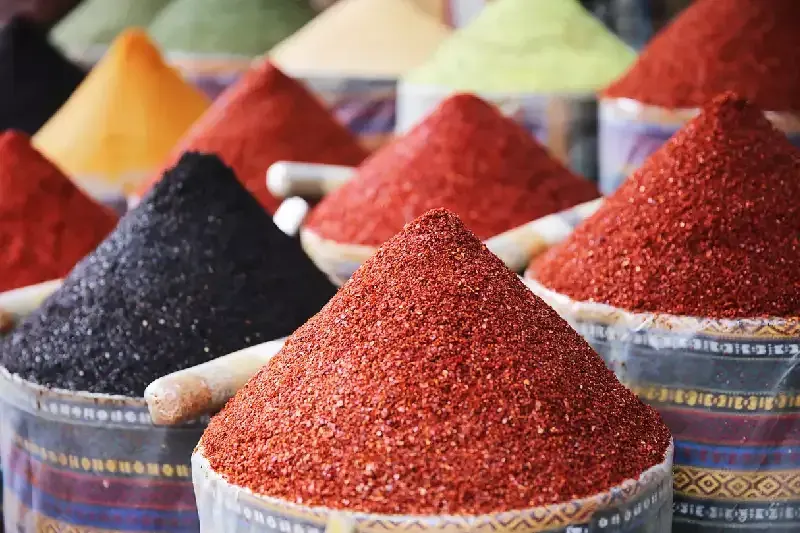
3. Turkish delight and baklava
Turkish delight (lokum), one of the oldest sweets from Anatolia, comes in many different flavors like pistachio, rose, pomegranate, and walnut. Baklava's origins date back to 1473, originally discovered in Topkapi Palace kitchen notebooks. The finest baklava is constructed with paper-thin phyllo dough stuffed with high-quality Antep pistachios or walnuts and sweetened with fine homemade syrup.
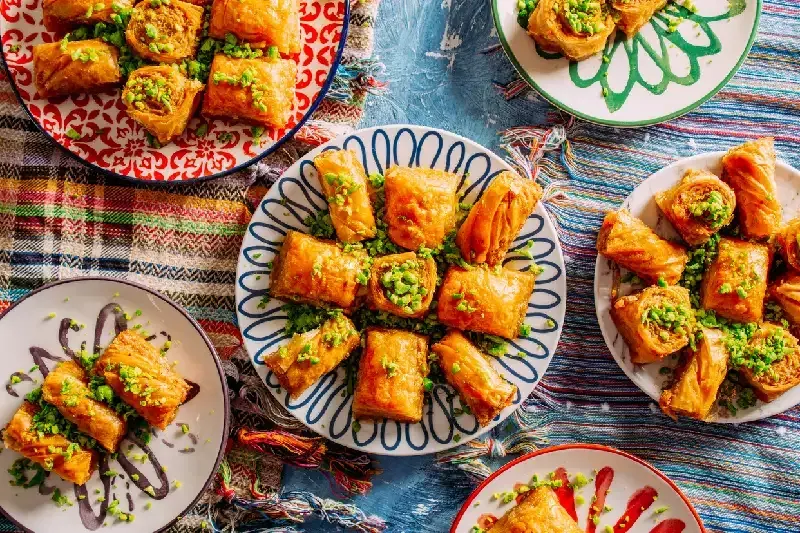
4. Iznik ceramics and pottery
Iznik artisans made these ceramics fashionable during the late 15th century. They had made beautiful-quality pottery with cobalt blue designs in transparent lead glaze. The golden age of Iznik pottery was in the 16th century when artists used the colors turquoise, emerald green, black, and their own bole red. The majority of the existing items still decorate the mosques, tombs, and palaces of Istanbul.
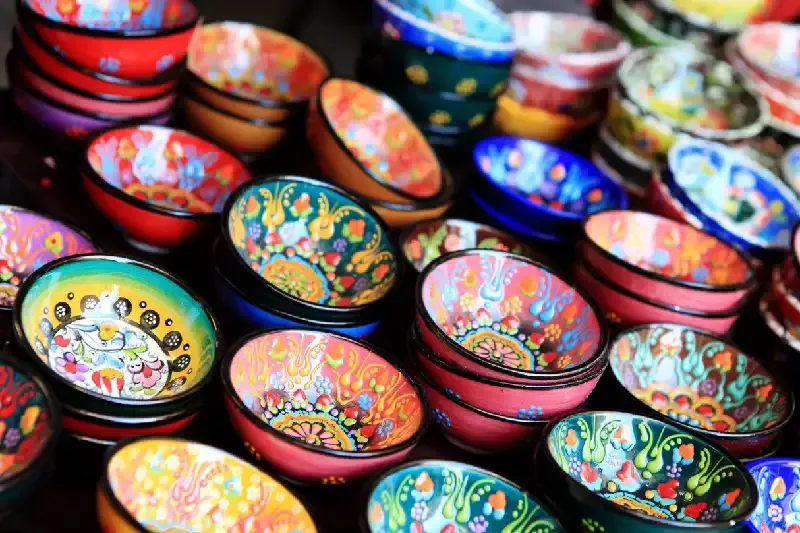
5. Turkish lamps and lanterns
Turkish mosaic lamps originated in pre-Byzantine times and remain very much part of traditional culture. The best lamps are constructed from handmade glass that has deep, rich colors that are fully preserved when lit, as opposed to cheaper ones. Real bronze bases add original lamps with their distinctive weight and texture, unlike plastic alternatives.
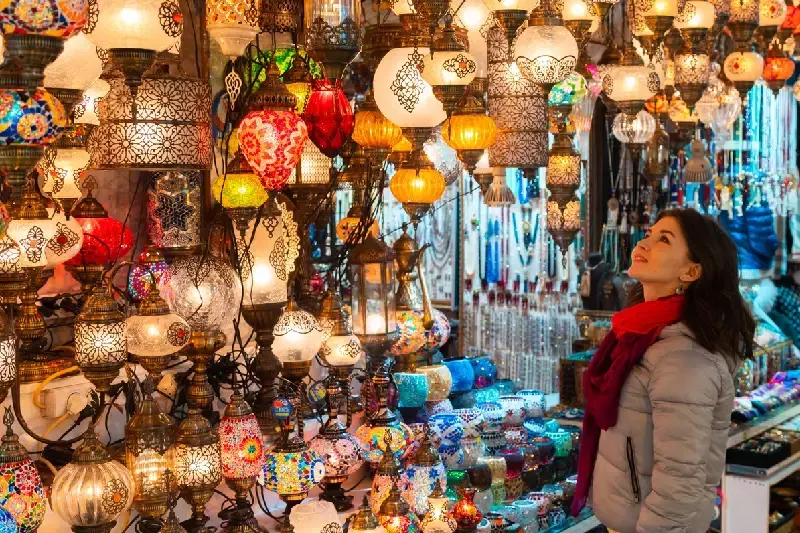
6. Evil eye charms and jewelry
The Turkish evil eye (Nazar Boncuk) is more than 5,000 years old and remains a popular item nationwide. Blue beads are used to ward off bad energy and damage. They are incorporated into jewelry (bead bracelets and necklaces), wall decorations, and keychains by craftsmen. A broken evil eye charm is believed by people to have fulfilled its protective mission.
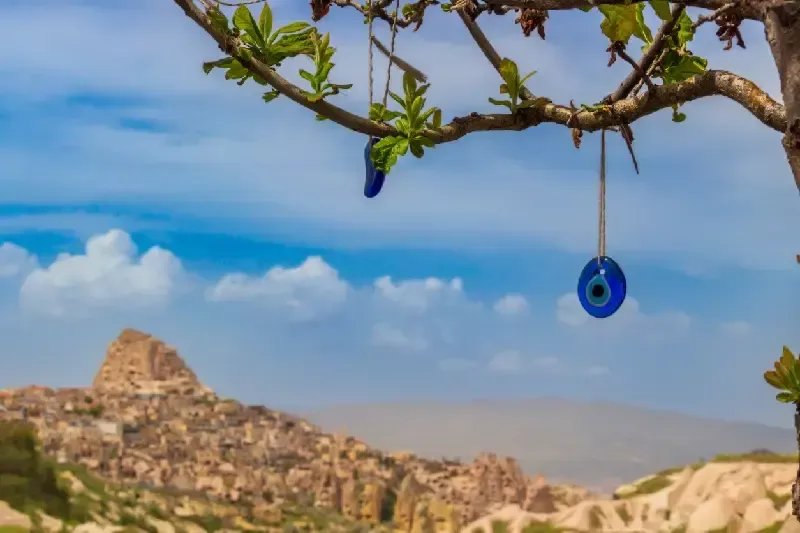
7. Leather products and textiles
Istanbul's Zeytinburnu quarter is Turkey's capital of leather manufacturing ranging from tiny ateliers to huge factories. The Grand Bazaar has several shops selling leather articles such as jackets, handbags, and accessories. Turkish leather is famous worldwide for top quality, exquisite designs, and cheaper prices compared to European counterparts.
8. Turkish coffee sets and copperware
Turkish coffee makers (cezve or ibrik) date back to the 15th century. Copper is the ideal metal to use for making cezves since it heats uniformly to deliver maximum flavor. Ornaments in cups and serving trays are included in most coffee sets. Buy cezves with a minimum copper thickness of 1mm - high-quality ones can go as high as 2mm - and wooden or heat-resistant handles.
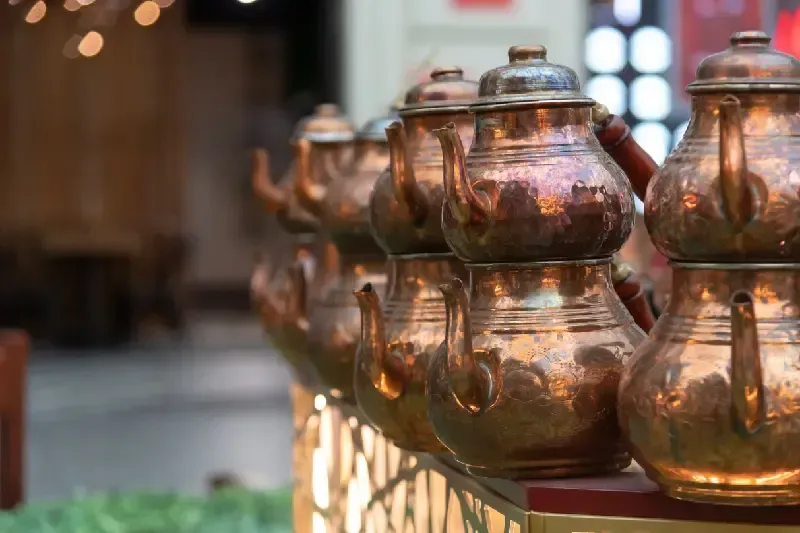
Best Bazaars in Turkey and What They Offer
Turkey's historic marketplaces offer six unique shopping experiences. Every bazaar has its own personality and specialty items to explore during your Turkey trip. The markets comprise Istanbul's famous covered bazaars and lesser-known treasures in other urban centers showcasing the country's long tradition of trading.
1- Grand Bazaar – Best for variety and souvenirs
Grand Bazaar has stood since 1461and prides itself as the largest indoor bazaar in the world. Its 60 streets have more than 4,000 shops. The architectural wonder features exquisite Turkish rug collections, ceramics, lanterns, evil eye amulets, and jewelry. The upscale center has fine quality gold and silver, which is found in one of the original sections of the bazaar. Early morning or afternoon is the best time to visit as there are fewer tourists.
2- Spice Bazaar – Ideal for food and spices
Spice Bazaar, or Egyptian Bazaar, is situated in Istanbul's Eminönü district. It has 85 shops filled with the bright colors of spices, Turkish delight, dried fruits, nuts, and souvenirs. Built in 1664 as part of the New Mosque complex, it's the most vibrant bazaar of Istanbul. Elevated consumers look for genuine Turkish spices like sumac, red pepper flakes, pomegranate syrup, and çörek otu (nigella seeds).
3- Arasta Bazaar – Great for Ceramics and textiles
Arasta Bazaar sits behind the Blue Mosque and it is a relaxed shopping area. There are no merchants who can approach the customers here. Top-of-the-line Iznik ceramics, fine textiles, and jewelry with hand-studding are stored in the covered street. The Sultan Ahmed Mosque's income earner has been replaced by some of Istanbul's best traders.
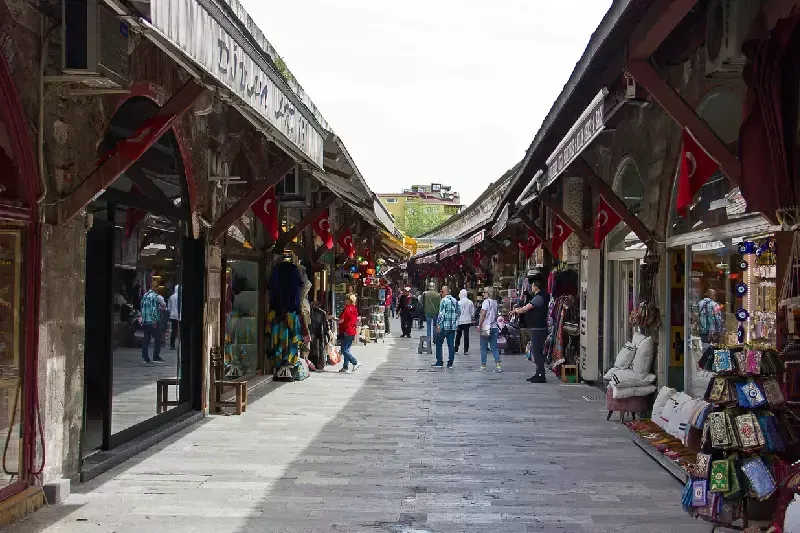
4- Kadıköy Market – Street style and local produce
Kadıköy Market on the Asian side of Istanbul is a festival for the senses. Güneşlibahçe Sokak features fresh fish, seasonal produce and fruits, honey, pickles, and toasted nuts. Foodies can sample regional Anatolian food, traditional Turkish coffee, and ice cream along the market.
5- Kemeralti Bazaar – Historical and diverse
İzmir's 2,400-year-old Kemeralti bazaar has been the city's commercial hub since Hellenistic times. There are approximately 2,000 registered buildings there, including churches, mosques, and synagogues. Shoppers can find traditional Turkish handicrafts, ceramics, carpets, kilims, and leather goods. In April 2020, UNESCO added the historic monument to its World Heritage Temporary List.
6- Çukurcuma – The best place to shop for antiques and vintage items
Çukurcuma, located in the Istanbul district of Beyoğlu, has become heaven for antique hunters. More than 150 shops sell Ottoman-era furniture, collectibles, and ancient antiques. Some shops, like Modern Tarih, handle precious books and art work, and others, like A La Turca, handle Ottoman textile and hand-woven carpets. The area offers consumers a more authentic alternative to the Grand Bazaar while searching for true historical objects.
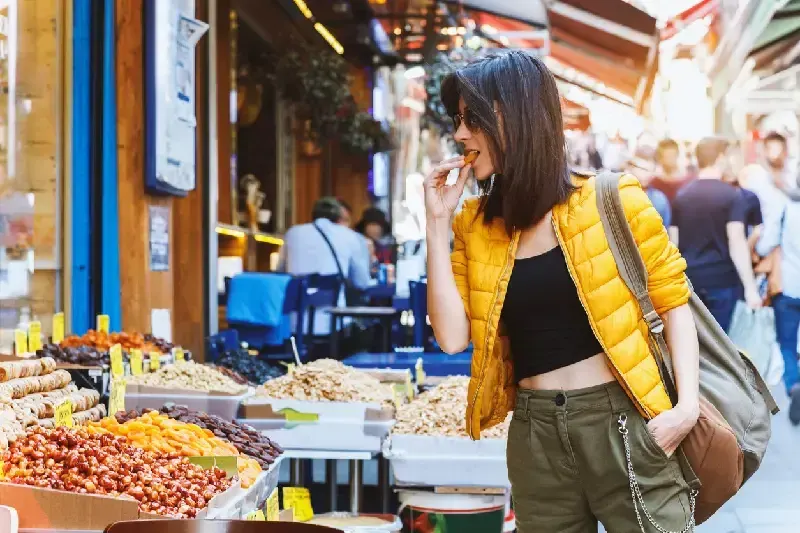
Shopping Tips for Turkish Bazaars
Shopping in Turkish bazaars turns ordinary buying into a cultural adventure that awakens all your senses. You are able to get authentic products at affordable prices without offending local customs by learning basic skills.
How to bargain with respect
Successful bargaining is both strategy and courtesy. . Show casual interest at first without seeming too excited about specific items. Wait for the seller to quote their first price, then feign shock while being polite. Quote your initial offer at 40-50% of their asking price and bid up gradually. The transaction will be sweetened from 11am to 1pm before sellers meet their daily targets. Stepping away occasionally gets you the best discount—if they don't come after you, you've probably hit their rock-bottom price.
Best times to visit with fewer tourists
Go early in the morning after opening or later in the afternoon for fewer people. Weekdays are less crowded than weekends. Weather is still nice with fewer tourists during shoulder seasons (April-May, September-October) compared to summer.
How to spot authentic vs. touristy goods
Authentic handmade goods come with minor imperfections that prove their genuine quality. Attempt to shop at reputable stores rather than souvenir stores. When buying ceramics, jewelry, or rugs, take note of authenticity indicators like hand-painted designs rather than printed ones. Fixed-price shops provide genuine goods without haggling.
Cash vs. card: what's accepted
All shops take credit cards for bigger purchases, but for bargaining, cash is the best. Foreign currency is not wanted, but the best prices are obtained when you pay in Turkish lira. An extra 10% discount is obtained if you pay in cash. Small trinkets and souvenirs typically are paid in cash.
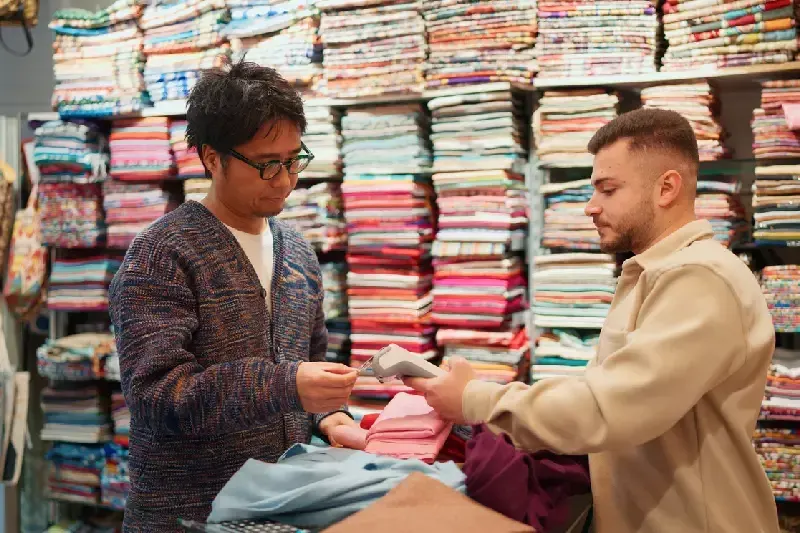
Cultural Etiquette and Local Insights
Turkish bazaars go beyond simple commerce and bargaining. These cultural institutions keep centuries-old traditions alive in daily life.
Tea culture and hospitality in bazaars
Turkish tea (çay) is the life-blood of bazaar hospitality. Merchants throughout the Grand Bazaar welcome visitors with this beverage that connects people from different backgrounds. The distinctive tulip-shaped glasses of çay seem to appear almost magically through a complex delivery network. Shop owners use a clever payment system. Tea servers drop small plastic coins in bowls by shop doors to create running tabs paid at day's end. Small tea shops use special double-stacked kettles called çaydanlık and serve over 2,000 glasses daily.
Why shopping in Turkey is more than just buying
Turkish bazaars create genuine cultural exchanges. Visitors experience traditions that surpass time as they interact with vendors who have run family stalls for generations. A vendor's description of the Grand Bazaar captures this spirit: "I have never wanted to leave this atmosphere. It has a captivating fabric. When I enter every morning, I feel like I've come to paradise". Many shopkeepers see themselves as cultural guardians rather than merchants because of this deep emotional connection. Common phrases to use while shopping:
These Turkish phrases will improve your bazaar experience:
- "Merhaba!" (Hello!)
- "Ne kadar?" (How much?)
- "Bu ne kadar?" (How much is this?)
- "İndirim var mı?" (Is there a discount?)
- "Teşekkür ederim!" (Thank you very much!)
These basic expressions show respect for local customs and often lead to friendlier interactions and better prices.
FAQS
Q1: What is the most famous bazaar in Turkey?
The Grand Bazaar in Istanbul is the most famous of all bazaars in Turkey. With over 4,000 shops, it’s one of the largest and oldest covered markets in the world — a true symbol of Turkish shopping culture.
Q2: Where are the best markets in Turkey?
Some of the best bazaars in Turkey are in Istanbul, Izmir, and Gaziantep. The Spice Bazaar, Kemeralti Market, and Zincirli Bedesten are great spots for authentic local products and traditional goods.
Q3: What is a must-buy item from Turkey?
A must-buy from bazaars in Turkey is a Turkish rug or carpet, known for intricate designs and craftsmanship. Other top picks include lokum (Turkish delight), hand-painted ceramics, and spices.
Q4: What is special about Turkish carpets?
Turkish carpets, often found in historic bazaars in Turkey, are handmade with natural dyes and detailed patterns. Each region has its own style, making them both a cultural treasure and a valuable keepsake.
Q5: Are Turkish tiles high quality?
Yes, Turkish tiles are world-renowned for their vivid colors and durability. You’ll find high-quality examples, especially in places like İznik and Kütahya, where tile-making is a centuries-old tradition.
